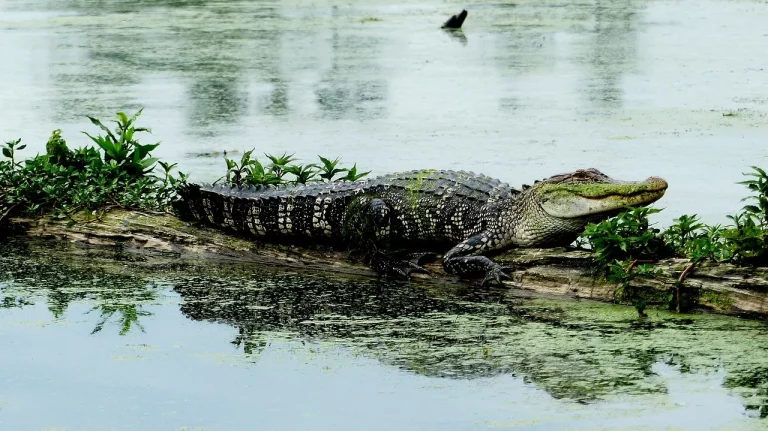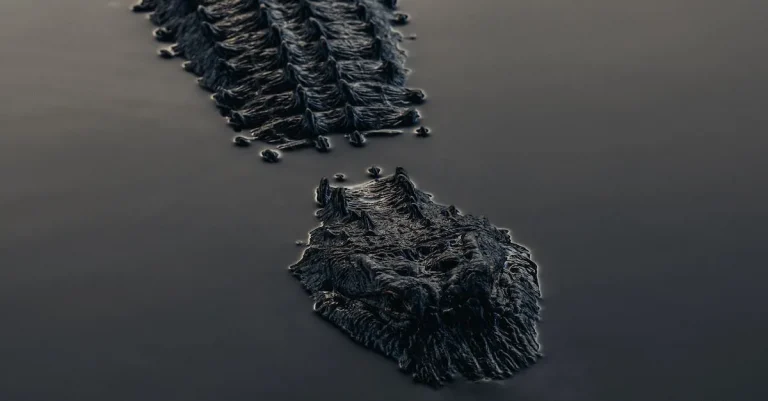Does California Get Water From Other States? An In-Depth Look
With drought and water shortages a recurring struggle in California, there are often questions around whether the state pipes in water from elsewhere to meet its needs. This issue also ties into broader debates around water rights and usage in the arid Western United States.
If you’re short on time, here’s a quick answer to your question: Yes, California does import water from other states, mainly across the Colorado River Aqueduct from the Colorado River. However, the vast majority of California’s water supply comes from within the state.
In this comprehensive guide, we’ll take a deep dive into California’s complex water supply and infrastructure. You’ll learn where out-of-state imports fit into the puzzle, which states supply water to California, the key aqueducts involved, and how much water is piped in from other parts of the West.
Understanding California’s In-State Water Sources
California, known for its diverse landscape and bustling cities, heavily relies on a variety of water sources to meet its ever-growing demand for water. While California does import water from other states, it also has an extensive network of in-state water sources that play a crucial role in sustaining the state’s population and economy.
Surface Water from Rivers and Lakes
One of the primary sources of water in California is surface water, which includes rivers and lakes. The state is home to several major rivers, such as the Sacramento and San Joaquin, that provide water for irrigation, drinking, and industrial use.
Additionally, California has numerous lakes, including the iconic Lake Tahoe and the expansive Salton Sea, which contribute to the state’s water supply.
Surface water is collected through an intricate system of dams, reservoirs, and canals, allowing for water storage and distribution across different regions. These water bodies serve as vital resources for agriculture, hydroelectric power generation, and recreational activities.
Groundwater Aquifers
Another significant source of water in California is groundwater. The state has vast underground reservoirs known as aquifers, which store water that has seeped into the ground over time. Groundwater accounts for a substantial portion of California’s water supply, especially in regions where surface water is scarce or unreliable.
However, over the years, California has faced challenges related to groundwater depletion and overdrafting. This has led to the implementation of groundwater management plans and regulations to ensure sustainable use and recharge of these vital water sources.
Recycled Water Supplies
To combat water scarcity and ensure a reliable water supply, California has also embraced the use of recycled water. This innovative approach involves treating wastewater to remove impurities and making it safe for various non-potable uses, such as irrigation, industrial processes, and groundwater recharge.
The use of recycled water not only conserves precious freshwater resources but also reduces the strain on traditional water sources. California has been at the forefront of promoting and implementing recycled water projects, with many cities and municipalities actively incorporating recycled water into their water supply portfolios.
Out-of-State Water Imported via the Colorado River
California, known for its dry climate and frequent droughts, heavily relies on water imported from other states to meet its water needs. One of the major sources of out-of-state water is the Colorado River, which supplies water to several western states, including California.
The Colorado River provides a vital lifeline for California’s water supply, but it also raises concerns about sustainability and the impact on the environment.
The Colorado River Aqueduct
The Colorado River Aqueduct is a massive infrastructure project that transports water from the Colorado River to Southern California. Stretching over 240 miles, the aqueduct delivers water to various cities and communities in the region.
The aqueduct system includes a network of canals, pipelines, and reservoirs that ensure a steady flow of water to meet the demands of California’s growing population.
The construction of the Colorado River Aqueduct was a significant engineering feat, involving the collaboration of multiple agencies and the completion of several dams and pumping stations. The aqueduct plays a crucial role in supplementing California’s local water sources and ensuring a reliable water supply, especially during periods of drought.
Water Allocated to California
Under the Colorado River Compact, which was signed in 1922, California is allocated a certain amount of water from the Colorado River. The allocation is based on historical water usage and is subject to periodic reviews and adjustments.
Currently, California is entitled to receive approximately 4.4 million acre-feet of water from the Colorado River each year.
Despite this substantial allocation, California’s demand for water far exceeds its supply. The state’s population growth, agricultural needs, and environmental requirements place immense pressure on its water resources.
As a result, California continues to rely on water imported from other states, including the water sourced from the Colorado River, to bridge the gap between supply and demand.
Drought Impacts on the Colorado River
The ongoing drought conditions across the western United States have had a significant impact on the Colorado River. Reduced snowpack, lower river flows, and increased evaporation rates have resulted in decreased water availability.
This has prompted water restrictions and cutbacks, affecting not only California but also other states that rely on the Colorado River for their water supply.
As the drought persists, the sustainability of the Colorado River as a water source for California and other states becomes a growing concern. Efforts are being made to promote water conservation, explore alternative sources, and implement innovative technologies to ensure the long-term viability of the Colorado River as a reliable water supply.
For more information on the Colorado River and its role in California’s water supply, visit www.usbr.gov or www.waterboards.ca.gov.
Smaller Transfers from Other Western States
While California is known for its extensive water infrastructure and vast network of reservoirs, it does rely on smaller transfers from other western states to meet its water needs. These transfers are crucial in times of drought or when local water supplies run low.
Northern California Imports
One source of water for California comes from northern states such as Oregon and Washington. The California State Water Project includes several canals and pipelines that bring water from the northern part of the state down to central and southern California.
This helps supplement the water supply in areas that are experiencing water shortages.
Additionally, the Colorado River, which flows through several western states including California, provides a significant amount of water to the state. The Colorado River Aqueduct, part of the California Water Project, brings water from the Colorado River to Southern California, helping to meet the water needs of millions of people.
The Proposed Snake River Project
Another potential source of water for California is the proposed Snake River Project. This project aims to divert water from the Snake River in Idaho and transport it to California through a series of canals and pipelines.
The idea behind this project is to utilize excess water from areas with surplus supplies and transfer it to areas with high demand.
However, it is important to note that the Snake River Project is still in the planning stages and has faced opposition from environmental groups concerned about the impact on wildlife and ecosystems. The project would require significant investment and careful consideration of its potential environmental consequences.
The Role of Water Transfers in California’s Supply
California, known for its hot, dry climate, faces significant challenges in meeting its water demands. With a growing population and limited water resources, the state relies on various strategies to ensure a sufficient water supply. One such strategy is water transfers from other states.
What are water transfers?
Water transfers refer to the movement of water from one location to another, typically from regions with surplus water to areas in need. In the case of California, water transfers involve importing water from neighboring states like Oregon and Nevada, as well as from the Colorado River.
These transfers can take various forms, including the physical transfer of water through pipelines or canals, or the purchase of water rights from other states. The water is then transported to California to supplement its own water supply.
Why does California rely on water transfers?
California’s reliance on water transfers can be attributed to several factors. Firstly, the state’s geography and climate make it prone to droughts and water scarcity. By importing water from other states, California can mitigate the impact of these natural challenges on its water supply.
Secondly, California’s population and agricultural demands continue to grow, placing additional stress on its water resources. Water transfers provide a means to meet these increasing demands and ensure sufficient water supply for both urban and agricultural use.
The benefits and challenges of water transfers
Water transfers offer several benefits to California. They provide a supplemental water source during droughts, help meet growing demands, and contribute to the stability of the state’s economy. Additionally, these transfers can promote regional cooperation and help balance water resources across different states.
However, water transfers also come with challenges. They can be costly in terms of infrastructure development and maintenance. Environmental concerns, such as the impact on ecosystems and wildlife, must also be carefully considered and mitigated.
It’s important to note that water transfers are just one part of California’s overall water management strategy. The state also emphasizes water conservation, recycling, and increasing local water supplies through projects like desalination plants and groundwater recharge.
Future Outlook and Water Rights Debates
The future outlook for water rights and debates in California is a topic of great concern for both residents and policymakers. With the ongoing challenges of climate change and increasing population, the demand for water is only expected to rise in the coming years.
This raises important questions about the sustainability of California’s water resources and the potential need to rely on other states for water supply.
Water Conservation Efforts
In recent years, California has implemented various water conservation efforts to mitigate the impact of water scarcity. These include promoting water-efficient technologies, implementing strict water usage restrictions, and encouraging residents to adopt sustainable water practices.
While these measures have helped in reducing water consumption, they may not be enough to meet the future demands.
Interstate Water Agreements
California has entered into several interstate water agreements to secure its water supply from other states. One such agreement is the Colorado River Compact, which allocates a portion of the Colorado River’s water to California.
Additionally, California has also established agreements with neighboring states, such as Oregon and Nevada, to share water resources during times of drought or water scarcity.
Water Rights Debates
The issue of water rights has been a contentious topic in California, with various stakeholders vying for access to limited water resources. Farmers, environmentalists, and urban areas all have competing interests when it comes to water allocation.
This has led to ongoing debates and legal battles over the distribution of water rights and the impact on different sectors of the economy.
One of the key debates revolves around the prioritization of water usage. Should water be primarily allocated for agricultural purposes, to sustain the state’s important farming industry? Or should it be directed towards urban areas to meet the demands of a growing population?
Finding a balance between these competing interests is crucial for ensuring sustainable water management in the future.
The Importance of Sustainable Practices
As California grapples with water scarcity and the need to rely on other states for water supply, it becomes increasingly important to adopt sustainable practices. This includes investing in water infrastructure, promoting water conservation, and exploring alternative water sources such as desalination and wastewater recycling.
By implementing these measures, California can reduce its reliance on external water sources and ensure a more secure water future. Additionally, continued research and innovation in water management technologies can also contribute to more efficient water use and conservation.
For more information on water rights and the future outlook for California’s water supply, you can visit websites such as the California Department of Water Resources or the Public Policy Institute of California.
Conclusion
While the vast majority of California’s water comes from within its borders, the state does pipe in supplemental supplies from the Colorado River and other sources. However, even those imports only make up around 15% of California’s total water use. With climate change and drought threatening water security in the West, debates over rights and allocation will likely continue. Careful management of both in-state and out-of-state sources will be key for California’s future.








